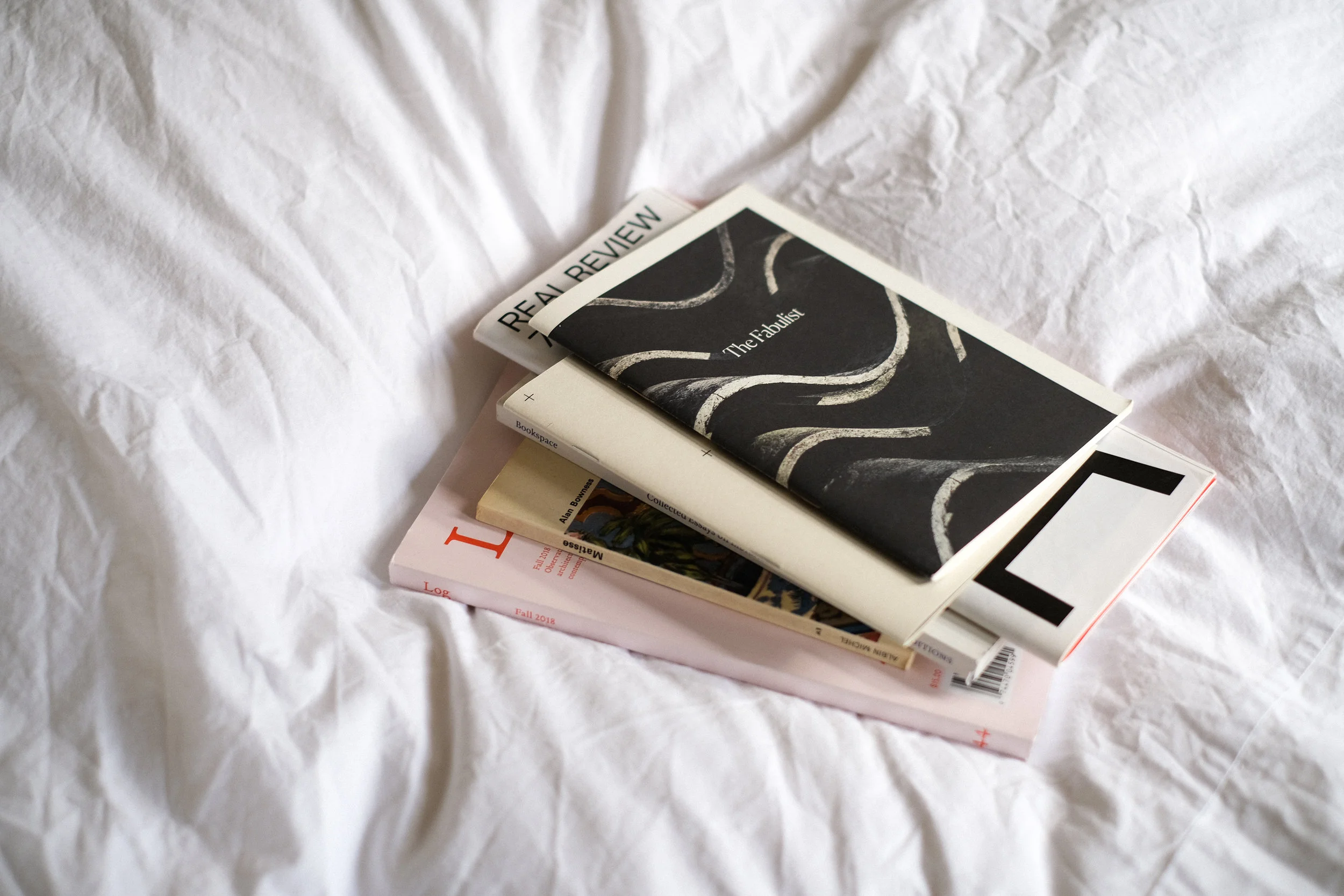I know a good book when I see one. High quality content is necessary, and fluff is absolutely prohibited. Excellent writing and/or excellent images, paper quality, thoughtful design, and that smell — combined, create a good book in my mind. And I thought I might share a few good books that I keep going back to for different reasons — some of which design-oriented, others, because its contents are absolutely sublime. And when the two combine, it’s like book magic.
From left to right, top to bottom. 1. “Matisse et le Nu” (vintage, found in Paris), 2. “WITH INFRASTRUCTURE” by Samuel White, 3. “The Fabulist” by Aesop in collaboration with the Serpentine Galleries, 4. Real Review issue 7, 5. “BOOKSPACE” by Inland Editions, " 6. “Log” issue 44.
Matisse et le Nu — This is just a simple little book of some of Matisse’s nudes, with a short introduction to Matisse. Printed in Italy in 1968, this book has stood the test of time! It smells of old art paper and its pages feel like glossy postcards. Overall, a beautiful piece of art in itself.
WITH INFRASTRUCTURE — Made by my dear friend, Samuel White, who is an artist based in London, this book explores “our relationship with infrastructure & how it can guide us towards a new, emancipatory politics”. The layout of the book itself is very SamWhite, in that I would imagine him looking exactly like this as a book. Maybe this doesn’t make sense to anyone but myself, but I shall leave it at that.
The Fabulist — I picked this gem up in London when I saw The London Mastaba by Christo and Jeanne-Claude at the Serpentine Galleries in London. A collaboration between Aesop and the Serpentine Galleries, “The Fabulist is a literary gesture born of the enjoyment and intellectual nourishment Aesop derives through the written word”. Though it contains only 5 “articles” which focus on various artists with differing mediums, this book is quite rich in content, and I enjoy reading it both for the aesthetic pleasure I derive from it and also because it’s just really well-written.
Real Review, issue 7 — I have been a fan of Real Review for a couple of years now, and I think this may be their best issue to date. Though you would think that its obvious format would be its most outstanding characteristic, it is in fact its written and visual content which blows me away which each read. Of course, a million and one things could be (and have been) said about the architecture of this book, and I will only say one thing about it now — its form perfectly follows its function. How can you pack in four times more content? Just fold the book in half. Brilliant. If you happen to order a copy, read the whole thing in one go. I dare you to tell me you haven’t changed your entire outlook on the world.
BOOKSPACE — I’m not going to lie, I totally judged this book by its cover. And all of its design elements as a matter of fact. I actually hate libraries, mostly because the ones at Berkeley reek of anxiety and dirty engineering students, but also because I’ve only ever gone to libraries to cram for exams and cry. Maybe I should try to go when I’m in a different emotional state. So, I haven’t actually read this book, but I do use it for reference when I’m making my own books. I think the feel of it is really nice and it’s really just a nice book to look at. I’m sure it has great essays. I should read it this week.
Log, issue 44 — Lock me in a cell forever with a stack of Log magazines. I might complain for a few months, but then I’ll realize what a blessing it is to have nothing else to do but to read and have time to understand dense architecture theory. Am I an architect? Nope. Do I understand architecture deeply? Nope. Do I have any right to say anything about architecture ever? Nope. Yet I seem to love architecture magazines with a passion. This one in particular is so inaccessible and confusing to me as well — but I feel a sense of achievement when I can actually understand an article and really absorb its message. I’d like to someday be able to comment on architecture in a meaningful way, and I think reading Log will help me get there. Also, this is another beautiful book — the typesetting is a dream and every issue comes with a postcard insert relating to its overarching theme.
These are all just really good books in their own ways.



